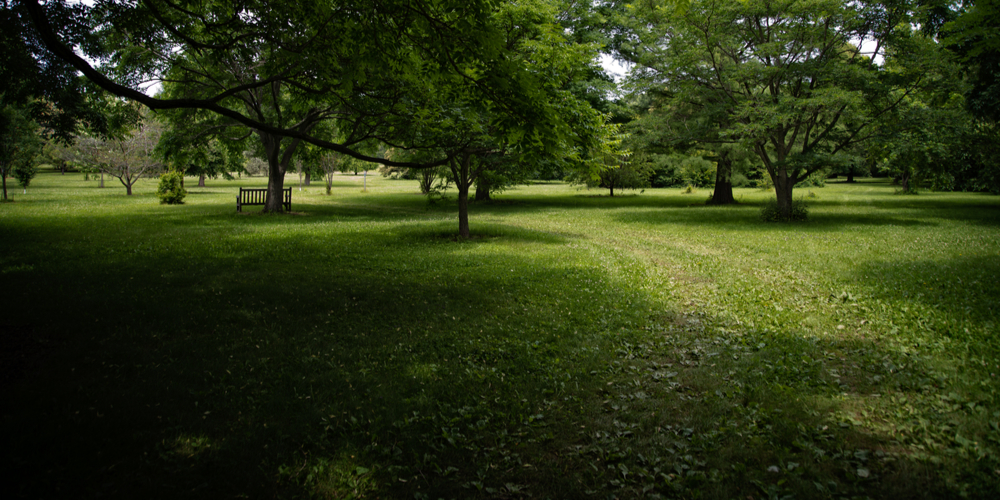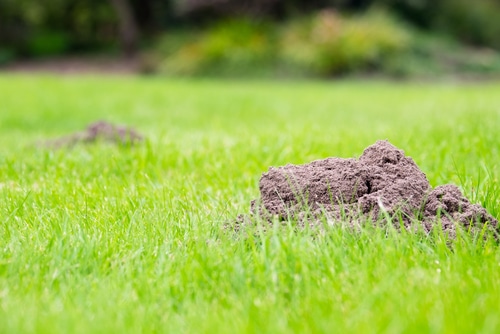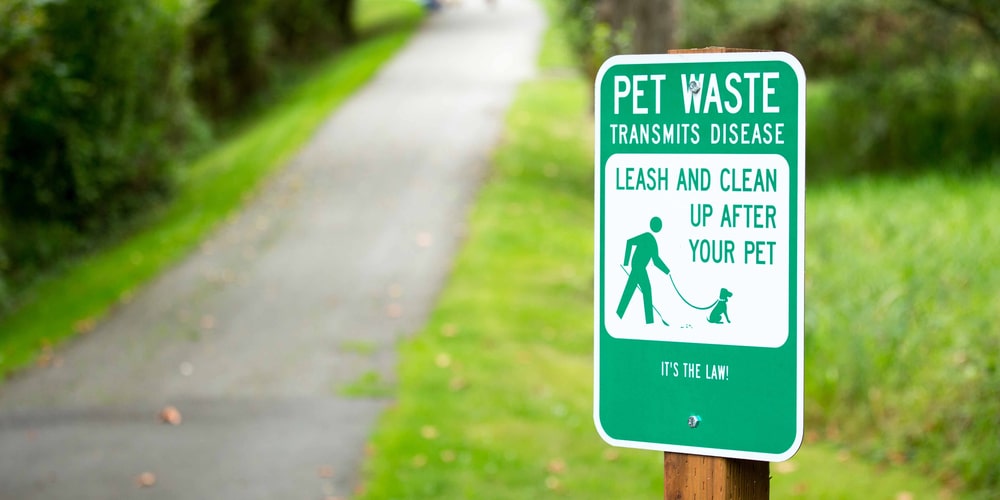Winter Debris Removal: 101
Removing winter debris from your lawn and garden beds is essential as spring approaches. Debris, such as leaves and fallen branches, can suffocate grass and emerging plants if not cleared away.
Types of Debris:
- Leaves: Can harbor pests and block sunlight.
- Fallen Branches: Pose tripping hazards and can damage new growth.
- Dead Plants: Attract diseases and pests.
Equipment Needed:
- Rake: For gathering leaves and small twigs.
- Gloves: To protect your hands.
- Pruners: To cut back dead plant material.
Step-by-Step Process:
- Assess the Area: Walk through your garden and lawn, making note of areas needing attention.
- Gather and Dispose: Rake leaves and small twigs into piles for removal. Consider composting when possible.
- Remove Large Debris: Safely dispose of fallen branches and large plant material.
- Prune Dead Material: Carefully prune dead or damaged parts from plants, using clean and sharp pruners.
Pro Tips:
- Wait until the soil is no longer soggy to prevent compacting the ground.
- Avoid pulling out plants prematurely—some perennials might look dead but are simply dormant.
- For larger debris, consider a professional debris removal service to handle bulky material safely.
Preparing for Clean-up
Before you dive into spring cleaning your lawn and garden beds, proper preparation is paramount to ensure efficiency and safety. It’s time to gear up and consider what you’ll need to handle all that winter debris.
Gathering Necessary Tools
Getting your lawn and garden back into shape requires a set of tools tailored to the tasks at hand. Here’s a list to help you gather what you’ll require:
- Rakes: A sturdy leaf rake and a heavier garden rake for different types of debris.
- Pruners: For trimming back dead or damaged branches and plants.
- Gloves: To protect your hands from thorns, splinters, and dirt.
- Wheelbarrow: Essential for transporting debris out of your garden.
- Tarp: Helps with moving lighter debris and can make clean-up quicker.
- Garden Bags or Bins: For collecting waste materials and ease of disposal.
Safety Measures Before Starting
Taking the right safety measures can prevent injury and make the clean-up process smoother and more enjoyable. You’ll want to include:
- Dress Appropriately: Wear sturdy shoes, long pants, and long-sleeved shirts to shield skin from scratches and insect bites.
- Check for Hazards: Survey the area for any hidden dangers, like sharp objects or unstable ground.
- Sun Protection: Apply sunscreen and wear a hat, as you will likely be working during sunny hours.
- Stay Hydrated: Keep a water bottle on hand to drink regularly, especially if it’s a warm day.
- Allergy Precautions: If you have allergies, wear a mask to avoid inhaling pollen or mold spores.
Getting Rid of Debris
When spring beckons, giving your lawn and garden beds a fresh start is key. Removing winter debris carefully avoids damage to emerging plants and supports a healthier growing season.
Strategies for Lawn Care
1. Identify Areas to Clean:
- Walk your property and note areas where debris has accumulated.
- Assess the Lawn: Look for fallen branches, leaves, and thatch buildup.
2. Gather the Right Tools:
- Rakes with flexible tines are gentler on grass.
- Leaf blowers set on the lowest speed can corral light debris without uprooting grass.
3. Begin the Clean-Up:
- Start from one end of the lawn and methodically work to the other side.
- Use Caution: Gently rake so you don’t pull out grass or disturb soil.
4. Thatch Control:
- If more than a half-inch of thatch is present, consider dethatching your lawn to promote nutrient penetration and water absorption.
- Compost appropriate debris if possible to minimize waste.
- Remove any litter or non-compostable materials and dispose of them properly.
Methods for Clearing Garden Beds
- Visually inspect for signs of plant growth to avoid unintentional damage.
- Carefully remove any protective coverings you had installed for the winter.
2. Hand Tools Are Your Friends:
- Smaller hand tools can help remove debris between delicate plants.
- Pruners are handy for snipping away dead plant material.
3. Clearing Out Mulch and Dead Material:
- Lightly rake out old mulch to expose soil, taking care not to harm new shoots.
- Clip away dead stems and foliage from perennials to make room for new growth.
4. Soil Preservation:
- Minimally disturb the soil to maintain its structure and the vital microorganisms within.
- If stepping into the beds is necessary, use a plank of wood to distribute your weight and reduce compaction.
5. Refresh Garden Beds:
- Once cleared, enrich the soil with compost before adding a new layer of mulch.
- Mulching helps retain moisture and suppresses weeds, setting the stage for a successful garden.
Where to Get Rid of Your Yard Waste
After you’ve gathered the winter debris from your lawn and garden beds, deciding how to dispose of it responsibly is crucial. Here’s how to proceed:
- Sorting the Debris: Before any disposal, sort the debris into categories:
- Organic material like leaves, branches, and dead plants.
- Non-organic material including plastics, fabrics, etc.
- Composting: Your organic waste is an asset for composting. Here’s what you can add to your compost pile:
- Fallen leaves
- Twigs and small branches (shredded or chopped)
- Plant trimmings
- Utilizing Yard Waste Services: Many municipalities offer yard waste pick-up services. Check your local guidelines typically found on city websites, and remember these key tips:
- Use approved bins or bags.
- Avoid mixing inorganic material, which can contaminate composting processes.
- Adhere to pick-up schedules to keep your garden clean and compliant with local regulations.
- Dropping Off at Collection Centers: If you have large amounts of yard waste, consider using local collection centers. They often have designated areas for various types of waste, ensuring proper recycling and disposal.
- DIY Garden Enhancements: You can transform garden waste into valuable additions for your garden such as:
- Filling raised beds with branches and leaves before topping with soil.
- Creating mulch from chipped wood debris.
Restoring Your Lawn and Garden
Revitalize your outdoor space by addressing lawn damage and refreshing garden beds. This section guides you through necessary steps to repair and maintain your lawn and prepping garden beds for new growth.
Lawn Repair and Maintenance
- Assess the Extent of the Damage: Before taking any action, closely examine your lawn for areas affected by winter stress.
- Look for compacted soil, dead patches, and thatch build-up.
- Aerate the Lawn: If your lawn is compacted, aerating allows oxygen, water, and nutrients to penetrate the soil.
- Aeration involves making small holes throughout your lawn using a specialized tool.
- Overseed Sparse Areas: For thin or bare patches, overseed with a grass seed mix suited for your region’s climate.
- Apply seed evenly and gently rake the area to ensure seed-to-soil contact.
- Apply Fertilizer: Select a fertilizer appropriate for your grass type and soil needs.
- Fertilizing your lawn aids in a lush, green revival, but be cautious to follow the product’s application instructions to prevent overfeeding.
- Regular Mowing: Set your mower to maintain a grass height of about three inches to prevent drying out.
- Consistent mowing keeps your lawn healthy and deters pests and weeds.
Garden Bed Rehabilitation
- Clear Out Debris: Begin with removing any leaves, twigs, or other debris that have accumulated over winter.
- This cleanup encourages better air circulation and reduces hiding spots for pests.
- Soil Testing and Amendment: Testing the soil informs you of nutrient deficiencies.
- Amend your garden beds with compost or well-rotted manure to improve fertility and texture.
- Weed Management: Early weed removal is crucial to prevent them from taking over your garden beds.
- Pull weeds by hand or use a hoe, ensuring you remove the roots to inhibit regrowth.
- Mulching: Apply a layer of mulch around your plants to retain moisture, regulate soil temperature, and reduce further weed encroachment.
- Prune Perennials: Trim dead or damaged parts from your plants to encourage new growth.
- Pruning also shapes your plants and can spur healthier, more robust development.
Frequently Asked Questions
Clearing winter debris from your lawn and garden beds is essential for a healthy, vibrant landscape. Here are targeted answers to common questions that can help you efficiently rejuvenate your outdoor space.
What is the best method for removing leaves from garden beds after winter?
The best method typically involves:
- Gently using a rake or leaf blower to avoid disturbing emerging plants.
- Picking up large debris by hand to minimize damage to soil structure.
When is the ideal time to clean out and prepare garden beds for spring?
The ideal time is:
- Just before the last frost date when the soil is workable and not too wet.
- When temperatures start to rise, indicating a shift in the season.
How can you quickly clear an overgrown garden at the end of winter?
To quickly clear an overgrown garden:
- Start by cutting back dead plant material with shears or pruners.
- Use a rake to gather loose debris and dispose of it appropriately.
What are the recommended steps to rejuvenate a weed-infested flower bed for the new season?
To rejuvenate a weed-infested bed:
- Remove all weeds by hand, ensuring you get the roots.
- Apply a layer of compost to nourish the soil before planting.
Is it advisable to leave leaves on flower beds during winter for protection?
Leaving leaves on flower beds can be beneficial as:
- They act as a natural mulch, insulating plant roots against cold weather.
What practices should be followed for switching from mulch to rock in flower beds?
When switching from mulch to rock:
- Remove any old mulch and ensure adequate weed barrier before laying down rock.
- Consider the drainage implications, as rock can alter soil moisture levels.
Last update on 2024-05-03 / Affiliate links / Images from Amazon Product Advertising API





